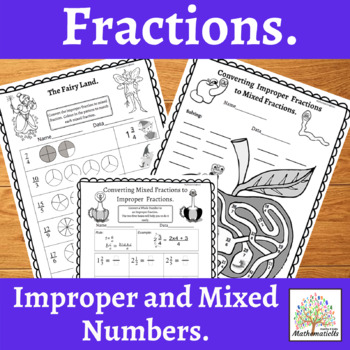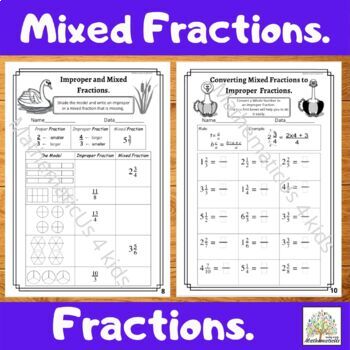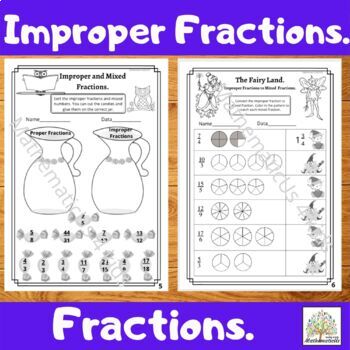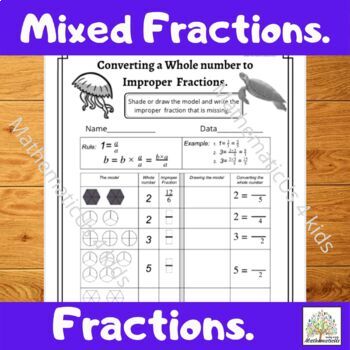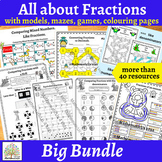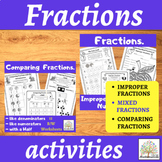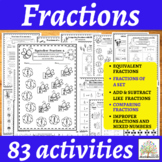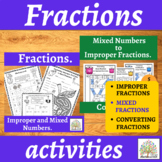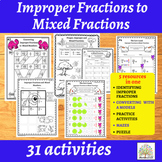Improper Fractions and Mixed Numbers
- PDF
Also included in
- It is a set of more than 40 Resources to practice in Fractions: Identifying, Adding and Subtracting, Converting Fractions to Decimals,Fractions of a Set, Comparing, Equivalent Fractions and Simplifying Fractions, and Converting Fractions to Percentages. These activities use a variety of diffePrice $100.00Original Price $125.70Save $25.70
- 30 activities and worksheets covered the topics of Improper Fraction and Mixed Numbers, Comparing Fractions with like denominators, or like numerators, or comparing with a half. These fraction tasks use a variety of different ways to challenge and engage your students in practicing identifying iPrice $5.50Original Price $7.00Save $1.50
- 83 activities, worksheets, games and mazes covered the topics of: Understanding Fractions, Equivalent Fractions and Simplifying Fractions, Addition and Subtraction Fractions with like denominators, Fractions of an Amount, Improper Fraction and Mixed Numbers, Comparing Fractions with like denominatoPrice $13.00Original Price $16.30Save $3.30
- 19 activities includes 14 worksheets and 5 mazes, covered the topic of Improper Fraction and Mixed Numbers, and Converting Improper Fraction and Mixed Numbers.These fraction tasks use a variety of different ways to challenge and engage your students in practicing identifying improper and mixed fracPrice $4.00Original Price $6.40Save $2.40
- julychristmas50 There are 32 activities (Worksheets, Mazes, Puzzle, and Dice Game) for practice in Converting improper fractions to mixed numbers. Each activity was designed to engage student practice more. Those activities make learning Improper Fractions and Mixed Numbers fun and easy for studentPrice $13.40Original Price $16.80Save $3.40
Description
14 Improper Fraction & Mixed Numbers activities and worksheets. These fraction tasks use a variety of different ways to challenge and engage your students in practicing identifying improper and mixed fractions, converting fractions from improper to mixed fractions and mixed fractions to improper fractions.
It includes:
3 pages for identifying proper, improper, and mixed fractions,
4 pages for converting fractions from improper to mixed fractions,
2 pages for converting from whole number to improper fraction,
1 page of word problems for converting fractions from improper to mixed fractions,
4 pages for converting fractions from mixed fractions to improper.
More Fraction Resources You May Enjoy!
Fractions. Identifying fractions. Creating your own design. Grade 2.
Fractions. Create your own design! Grade 3. Activities. Distance Learning.
Identifying Fractions. Creating your own design.
Fraction. Adding and Subtracting Fractions, Equivalent Fractions,... Part 1.
Comparing Fractions. Unlike Fractions. Mazes.
Bundles:
Fractions of an amount.Creating your own design.Grade 2-4.
Comparing Fractions Like numerators Like denominators Unlike Denominators Mazes

